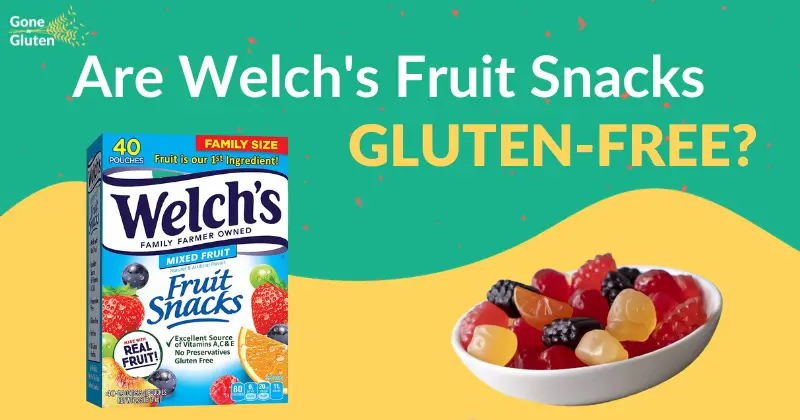Gluten and lactose are two common irritants and allergens. They can cause various symptoms that can make everyday life a misery for sufferers, including:
- Bloating
- Bellyaches
- Acne
- Sneezing and coughing
- Blocked sinuses
- Nausea
- Headaches
This can lead to some fundamental issues such as:
- Lack of appetite
- Trouble sleeping
- Low mood
- Poor concentration
If that sounds familiar then a GFDF diet can be a great way of tackling your symptoms, it was a game-changer for me.
But it’s only when you try a gluten-free diet (GFD) and a dairy-free diet (DFD) that you realize many of your favorite products and recipes contain gluten and dairy. How do you adapt?
In this post we will cover some basic tips you can follow to harmonize your mind and body and improve your wellbeing.

Ethical reasons for going gluten-free
Growing wheat uses a lot of fertilizer, which requires a lot of energy to produce. When fertilizer degrades into the soil it releases harmful nitrous oxide gas. Worse still—pesticides are commonly used in the production of wheat. Pesticides damage the environment and all lifeforms on Earth.
Going gluten-free may help to reduce your carbon footprint.
Ethical reasons for going dairy-free
Time for some uncomfortable truth. Dairy cows are continuously impregnated and die of exhaustion long before their natural life cycle. In fact, many vegans believe that dairy farming is more cruel and inhumane than eating meat.
Tips on Living GFDF
Ethical reasons may motivate you and make this journey a bit easier to take on, but what’s next after committing to this lifestyle change?
1. Define what you want from your new diet

As well as the ethical reasons for a GFDFD, there are health benefits. Define what you want from your new diet to help you keep on track.
Evaluate the severity of your condition
If you have a sensitivity to gluten or lactose then symptoms can vary hugely, from mild discomfort to severe illness requiring hospital treatment. Even on a GFD, you will likely consume around 5 to 50 milligrams of gluten per day from cross-contamination.
The Food and Drug Administration (FDA) deems that gluten-free products must contain 20 parts gluten per million or fewer. If you have a severe intolerance, you might need to stick to products with Gluten-Free Certification Organization approval (GFCO), which requires 10 parts gluten per million or fewer.
Get motivated!
A GFDFD is a major commitment and requires willpower and dedication. Having a clear idea of your reasons for going GFDF will help motivate you when things get tough.
You may find yourself in a situation where your only options are to eat gluten/dairy or eat nothing. I have fallen off the wagon occasionally; sometimes I regret it and sometimes I don’t, so it’s worth preparing yourself for this dilemma.
2. phased reduction or cold turkey?

If your allergic symptoms are mild then you may have the luxury of phasing out wheat and dairy over time. You might start with one GFDF day per week and slowly increase. You can then adjust to your new diet and adapt your eating habits one step at a time.
If you have severe allergies or you’ve gone vegan then you might have to go cold turkey. Or cold plant-based turkey alternative.
Purge your pantry
Find a sturdy box and put in every can, tube, bottle, pack, or jar that isn’t GFDF. Read the labels because gluten and dairy are sneaky! Once you’re done, give the box to a friend or neighbor who isn’t GFDF. The sooner you do this, the sooner you will be free from the irritations of your allergies.
3. Revolution, not evolution

If your GFDFD is to eliminate allergic reactions, then you can swap out your old products for GFDF alternatives. Problem solved!
But going GFDF is an opportunity to change your attitude to food. Packs and cans of factory processed foods stuffed with salt, sugar, and fat are bad. Whole foods such as fruit, veggies, nuts and GF grains are good. Going GFDF is an opportunity to review and reevaluate your diet—for the better.
4. get a balanced diet

If you’re removing gluten and dairy, you need to replace them. Many meat and milk alternatives are fortified with calcium, vitamin D, protein, and iodine among other things. They can vary from product to product so check the label.
If you’re still eating meat then iron and protein won’t be a major issue. If not, make sure you eat plenty of:
- Leafy greens such as spinach and kale
- Beans and legumes
- Nuts and seeds
- Dried fruit
Nutritional Yeast Flakes
This is a great dietary supplement; it has a cheesy, nutty flavor and it’s super versatile. Add it to:
- Soups
- Salads
- Veggies
- Smoothies
- Cereal
- Gravy and sauces
Nutritional Yeast is high in vitamin B12, folic acid, zinc, fiber, and protein.
5. educate your family and friends

It might take a while for others to adjust to your new diet. Help them understand some of the basic foods that you no longer eat.
If you’re going to a dinner party, ask your host about preparation and cross-contamination. You don’t have to eat anything you’re unsure about. Bring along some of your favorite GFDF foods for them to try. It’s a learning curve for everyone.
6. use your freezer!

Transitioning towards a diet of fresh fruit and veg can be expensive, and fresh food goes off quickly. This is where your freezer is your friend! You can freeze berries and vegetables, and even herbs such as basil and cilantro.
Alternatively, you can make your fresh vegetables into soups and curries, and freeze them in portion sizes for convenience.
Stew apples and other fruits to make sauces and confectionaries.
7. go for smoothies, not juices

Juices may seem a healthy and convenient way to eat fruit. But the refined nature of juices means that sugar is concentrated and absorbed quickly, causing a spike in blood sugar levels. Juicing also removes all the fiber goodness from your fresh produce.
When you drink a smoothie, your body digests the fiber and this creates a slow-release of sugar and also eases digestion.
8. inform your waiter of your dietary requirements

Cream is added to many soups and sauces, and wheat flour is often used to make French fries crispy. Malt vinegar and soy sauce are unexpected sources of gluten, so notify your waiter of your needs.
Clearly specify that you are ordering from the GF and DF menus because restaurants often have non-GFDF versions of their dishes on the regular menu.
Plan ahead—I check menus online at home. If they don’t have a website or a menu, be creative! Check socials, people often photograph menus and post them on Insta, Twitter, or Facebook.
9. GF bread and DF cheese: treat them as a treat

Gluten is the substance that makes bread soft and stretchy. GF bread is often brittle or overly crumbly. So for myself and many on a GFD, bread is no longer the convenient, everyday staple it once was. Sure, there are some good GF baked products.
I’ve found some great rolls to go with my chickpea burgers. But they are four times more expensive than normal rolls! And there has been a lot of trial and error. I’ve had some GF bread that was like biting into a freshly made mattress! A lot of GF bread doesn’t toast very well either and goes straight from white to charcoal.
The same is true of DF cheese. It tastes, smells, feels, and melts differently from regular cheese. I’ve found a good DF cheese for making homemade pizza, but again, cheese is now more of an occasional luxury than an everyday treat. There are many great GFDF products and new ones appear all the time, but be realistic about how authentic they can be.
Another option is sourdough bread. It is often DF, and although it isn’t GF it has a much lower wheat content than regular bread. The dough is fermented, and fermented food is great for your gut. I treat myself to sourdough bread on rare occasion and do not have a reaction. However, I have a gluten intolerance. Those with celiac disease or an allergy should avoid gluten entirely.
10. discover baked potatoes

Instead of putting your favorite filling in a sandwich, enjoy it on a baked potato! This has long been a lunchtime standard in the UK, and is now catching on in the US.
The potato is baked whole until it has soft creamy flesh on the inside and firm, crunchy skin on the outside—which is why Brits often call them jacket potatoes. Once baked you simply cut it open lengthways and add your filling, which can include:
- Chilli
- Beans
- Vegan cheese
- Hummus
- Tuna salad
- Egg salad
- Chinese chicken
- Veggie curry
It’s also common to have one hot and one cold filling on your potato, such as beans and vegan coleslaw or chilli and vegan cheese.
Beware when ordering at your deli, as flour is sometimes used.
Pro Tip: For extra crispy skin, rub your potato with olive oil and rock salt before baking.
11. Practice mindfulness

After a busy day, you empty a can of processed mush into a bowl and shove it in the microwave. Not anymore!
Factory farming and processing have created a culture where we overproduce and undervalue our food. The average American home wastes 31.9% of its edibles. A GFDFD is a chance to change.
When you prepare more food yourself, you can experience the textures, aromas, and colors of the ingredients. See how they change during the cooking process. This can give you a better appreciation for the food you put on your plate and the planet you live on.
When all your uncomfortable allergies subside, listen to your body. It will tell you what it needs.
12. A word on alcohol

Unless it’s advertised as GF, all beer contains gluten. The good news is that most spirits and wine and ciders are naturally GF. A small glass of red wine can provide health benefits. A large glass of wine can provide recreational benefits!
13. get support

Changing your lifestyle can be daunting, but you’re not alone. There are websites with GFDF recipes, countless YouTube channels, social media groups, and blogs.
Go to your local GFDF restaurant and ask if there are any support groups or other resources in your community. I have a local chef who makes a different GFDF recipe every Friday night from her home kitchen to sell to her neighbors. It’s always excellent, and I found her on Twitter so keep an eye out for hidden gems.
Final thoughts
When I went GFDF, I had major food anxiety. My favorite cookies—gone! My best pancake recipe—lost! Certainly, I have had to make alterations and adjustments. But a GFDFD opens way more doors than it closes. Embrace the opportunity to expand your diet and improve your health.
If GF options are proving expensive, check out How To Eat Gluten-Free On A Budget: 6 Easy Steps.



